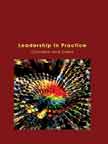Self Employed Women's Association (SEWA) - Empowering Women in India




|
|
ICMR HOME | Case Studies Collection
Case Details:
Case Code : LDEN029
Case Length : 09 Pages
Period : 1970-2004
Pub Date : 2004
Teaching Note : Available
Organization : Self Employed Women's Association
Industry : Service
Countries : India
To download Self Employed Women's Association (SEWA) - Empowering Women in
India case study
(Case Code: LDEN029) click on the button below, and select the case from the list of available cases:

Price:
For delivery in electronic format: Rs. 300;
For delivery through courier (within India): Rs. 300 + Rs. 25 for Shipping & Handling Charges
»
Leadership and Entrepreneurship Case Studies
» Case Studies Collection
» ICMR HOME
» Short Case Studies
» View Detailed Pricing Info
» How To Order This Case
» Business Case Studies
» Area Specific Case Studies
» Industry Wise Case Studies
» Company Wise Case Studies
Please note:
This case study was compiled from published sources, and is intended to be used as a basis for class discussion. It is not intended to illustrate either effective or ineffective handling of a management situation. Nor is it a primary information source.
|
|
<< Previous
Organization and Growth of SEWA
|
In 1972, the garment workers formed their own co-operative.
They were the first group to be organized under SEWA. By 1977, six other groups
- used garment dealers, handcart pullers, vegetable vendors, junk-smiths, milk
producers and miscellaneous workers - formed their own cooperatives.
The co-operatives were formed with the share capital provided by the women. Each
co-operative was run by a democratically elected executive committee of workers.
(Refer Exhibit II for the structure of the co-operatives) Initially, SEWA
provided the required capital to the co-operatives, but once they were
established, they functioned on their own. |
|
The members of the co-operatives shared their skills and expertise, developed
new tools, designs and techniques and were engaged in joint marketing
efforts. The members of SEWA increased from 320 in 1973 to 6,94,551 in 2002.
(Refer Exhibit III). The self-employed women could be divided into four main
groups: home-based workers, street vendors, contract laborers and small
producers. (Refer Exhibit IV) Any self-employed woman over the age of 15 was
eligible to become a member of SEWA by paying a nominal annual fee of Rs. 3.
In 1975, the annual membership fee was increased to Rs. 5 (0.11 USD11).
|
|
Activities of SEWA
SEWA provided access to easy credit through the
savings and credit co-operative, SEWA Bank. SEWA also extended help in
providing social security services like housing, childcare and health
care facilities. Realising the need to train the members it established
the SEWA Academy. With reference to the various activities undertaken by
SEWA, Bhatt said, "These organisations invigorate the movement to go
ahead and in the process more organisations take birth and take roots.
It is like the banyan tree whose branches take roots and grow into
independent self-reliant trees throwing out more branches and so on. |
The banyan tree sprawls on the ground for generations to
come. Even cutting down a branch from the mother tree would not destroy any one,
both will survive."12
Excerpts>>
|
|



